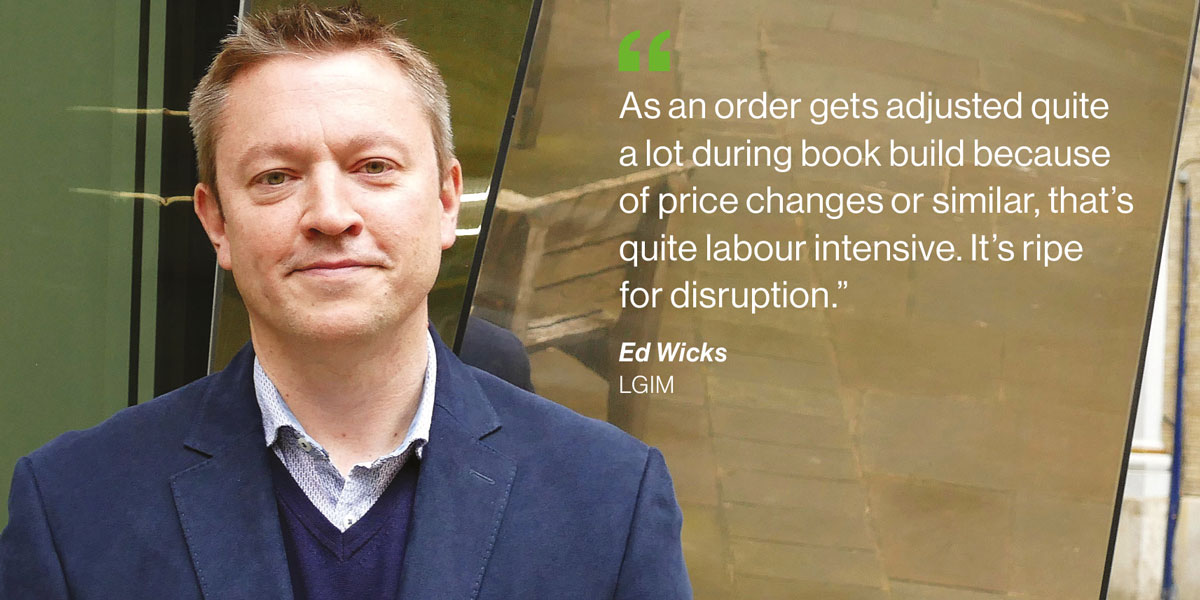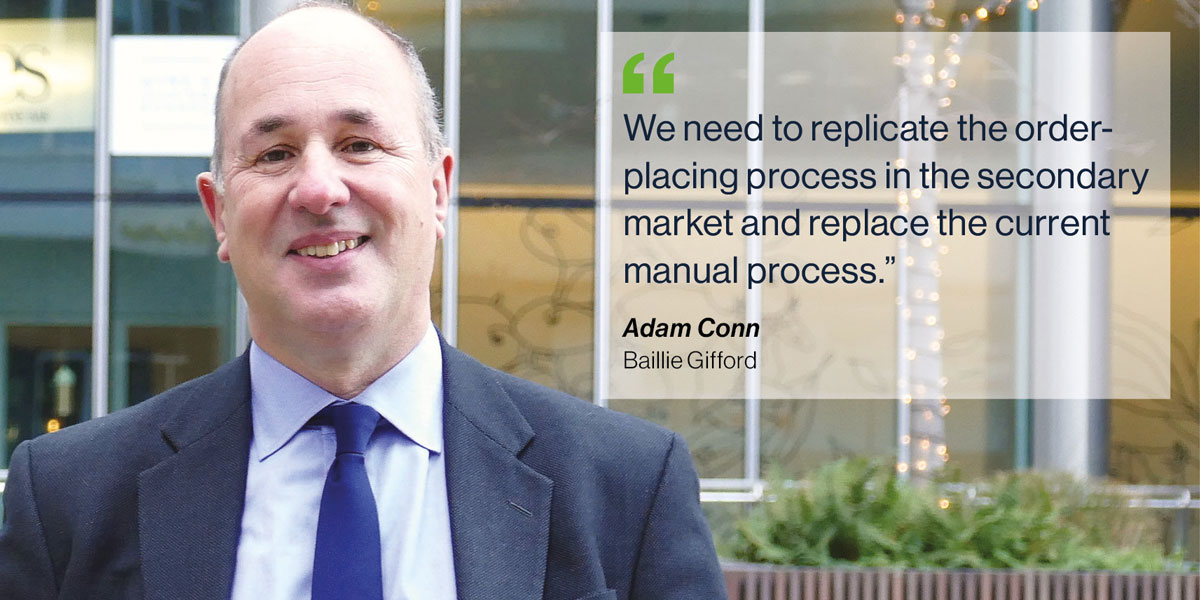While IPO numbers are low, the chance to electronify new issues should be taken, minimising the risk and complexity of change. Dan Barnes reports.
Initial public offerings (IPOs) are not the most pressing issue in equity markets today – and that is precisely why now is the time to reform them, say market participants.
In 2023, global IPO volumes fell 8% year-on-year with proceeds down by 33% compared with 2022, according to EY, with 2023 being the lowest for proceeds in five years. Concern about falling IPO volumes in Europe is a pressing concern, for investors and politicians.
For the people who manage equity issuance, either in IPOs or in secondary placement of bonds, this let up in activity gives a window of opportunity to modernise the very manual processes involved.

“In some ways, equity capital markets have remained quite old fashioned, at least in part, because of the relative infrequency of activity,” says Gareth McCartney, global co-head of equity capital markets at UBS. “You might do four or five major IPOs a year in Europe, Middle East, Africa (EMEA) and by comparison you probably do 50 block trades a year. But equally, given innovation elsewhere in the market, relying on verbal order entry, manual processing and calibration, there’s a real opportunity for change.”
Ed Wicks, global head of trading at LGIM, says, “For equities, it’s an incredibly manual, laborious process and it’s not without operational risk or burden because of that. The number of interlocutors is high, with multiple portfolio managers (PMs) potentially looking to participate in an opportunity, multiple sell-side contacts to interact with as well, so the driver for me is probably first and foremost an efficiency play.”
The gap between the buy side and sell side creates operational risk through human error – which is an expensive mistake in large primary orders – and this needs bridging says John Bentinck, co-founder of Primary Portal, which has developed a platform specifically to tackle inefficiencies in primary markets.
“When a PM decides to submit an order indication, he will instruct his traders, who will then contact their sales-trading counterparts at the banks by phone, email or chat,” he says. “The sales traders will then manually re-key that order indication into a ticketing system to get it into a bookbuilding system.”
Motivation on the sell-side is just as high as it is for asset managers notes McCartney, as the amount of labour spent without generating addition value is high.
“Today the process is fairly manual and voice-operated, rather than electronic,” he observes. “If you just take the book build, the bank must go to multiple traders and a lot of people have to enter the order over the phone rather than electronically. As an order gets adjusted quite a lot during book build because of price changes or similar, that’s quite labour intensive. It’s ripe for disruption.”
The electric IPO
Electronifying the IPO process is not a new idea, notes Adam Conn, head of trading at Baillie Gifford, and with both buy- and sell-side firms agreeing that change is desirable, a direct path forward is needed.
“In 2014, a number of buy-side firms met to discuss ways to improve efficiency and when transmitting orders in equity IPOs, placings and fixed income new issues,” he says. “We need to replicate the order-placing process in the secondary market and replace the current manual process. The goal is to remove the risk of error in transmission, and of any misinterpretation by the receiver of those placed orders.”
However, there are nuances within the process which could be tackled by any given solution, and these need to be agreed on before a common system is developed.

“Depending on what you’re looking for the solution to achieve, is it a means of communicating an order and receiving an allocation?” says Wicks. “Or is it a means of more thoroughly following electronically bookbuilding and pre-allocation processes?”
Bentinck says that delivering an electronic flow of information will be the key deliverable.
“The problem we’re trying to solve for the buy side is the straight-through-processing of indications and allocations in equity capital markets (ECM) transactions. Right now, it’s very inefficient as the order management systems (OMSs) and execution management systems (EMSs) that the buy-side use are not interoperable with the bookbuilding systems that the banks use. The process is labour-intensive and error prone because of all the manual rekeying.”
Preventing fragmentation
On both sides of the street, technology is in place which firms will want to continue using, and Wicks notes that any solution will need to avoid replicating this complexity by working with what is there and not replacing it.
“The first challenge is interoperability,” he says. “Finding something that can work for a good segment of the market. Scale is important. Secondly, not just on the banking side, but on the asset management side, every trading desk and asset manager potentially has a different process. Then on the technology side, asset managers can have different OEMSs that they want to connect to.”
Bentinck agrees, “We’re creating the infrastructure layer in between that makes those systems interoperable. In our view, a buy-side firm should be able to use whatever OMS/EMS they choose to place an indication and those indications should flow straight into whatever bookbuilding system a bank is choosing to use, be it Dealogic, S&P, CMG or an in-house system that some of the larger banks are building.”
In an effort to be completely agnostic when facilitating the flow of indications and allocations, Primary Portal has developed user interfaces on for both the buy side and the sell side to allow those flows to take place.
“There are about 15 buy-side institutions who are actively using our order indication system,” Bentinck says. “As a second step, we would like the bookbuilding providers and the OMS/EMS systems to work with us to create those integrations. Banks recognise that order indication entry is not something they can do on their own as the buy side doesn’t want to enter indications into different systems. They want a platform that will be agnostic to whatever bookbuilding technology the bank is using.”
Standard approach
While the development of several systems appears to be hitting the right buttons for both banks and investors, the providers need to be cognisant that having multiple solutions will simply create the need for another layer that allows integration of those views into a single picture.
“We’re definitely seeing a couple of solutions in the last six to eight months, which are looking to address that specific interoperability challenge,” says Wicks. “There’s more than one. And again, that’s great. But at some point, the probability of success will be greater if we can coalesce around a solution.”
Conn observes that committees discussing the FIX Trading Protocol were behind the meeting to solve this issue ten years ago and that a standard communication protocol would almost certainly be needed.

“We understand that FIX is the protocol that OMS systems universally support and that’s why we are focused on establishing connectivity using FIX,” notes Ilan Leshem, co-founder of Primary Portal. “An alternative REST API is available though we will be guided by the demands of our buy-side clients. Primary Portal brings an agnostic and open standard to the market, our goal is to enable the buyside to communicate their indications of interest from their OMS system, eliminating the need for re-keying and thus reducing risk and time to deliver the information to their sell side counterparts.”
In the fixed income space, regional preferences have led different solutions to being adopted in tackling primary markets, and this could also play out in equities.
“There are regional biases, in equities in a similar fashion to FICC,” says Wicks. “There are regional differences between some solutions and finding the right solution that fits globally is one of the challenges. If you can find a solution that knits together those existing solutions that are more regionally focused, that could be very helpful.”
Although the adage ‘fix your roof when it is not raining’ suggests now is the time for markets to tackle this issue, the lack of commercial imperative could also delay things further, relative to more costly priorities.
“What you’re saving this year is likely to be a little bit of time from a few people, infrequently,” says McCartney. “In 2021 when the market had a peak flow problem, and then this was massive because the man hours saving was huge. Roll forward to 2023 and it’s really saving money at the margin. If there’s a real economic driver, then people will move pretty quickly.”
©Markets Media Europe 2024 TOP OF PAGE
